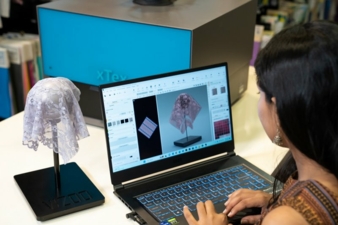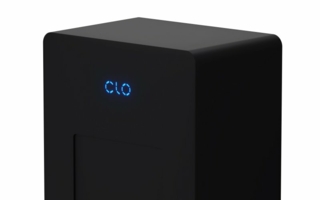17/09/2024 – 3D CAD software
Vizoo introduces interoperable Drape Validation Workflow
Vizoo GmbH, a leader in material digitization technologies, launches the Drape Validation Workflow, a consistent and software-independent method for assessing digital fabric quality.
The apparel industry is embracing Digital Product Creation (DPC), but lacks standardized processes and interoperability between different software platforms. This creates challenges for brands and suppliers when exchanging digital materials. Brands require suppliers to create high-quality digital twins of materials, while suppliers need clear expectations from brands to ensure successful delivery. The lack of quality standards leads to communication gaps and delays in the process.
Vizoo’s Drape Validation Workflow addresses these challenges by providing a standardized method for evaluating digital fabric quality, regardless of the software used. Martin Semsch, Vizoo CEO, states, “We realized that there’s a gap in ensuring accuracy and consistency across apparel 3D CAD software. We developed the Drape Validation Workflow to make it easier to verify the creation of a digital twin, no matter what software is used.”
The workflow was developed through extensive research, testing, and collaboration with industry partners like Browzwear, CLO3D, and Optitex. It has been successfully implemented by a major fashion group, training five material digitization hubs and eleven fabric mills across APAC and EMEA.
Positive impact and adoption
The Drape Validation Workflow has been widely adopted within six months of its release, demonstrating its value in enhancing efficiency and standardization. Lisa Hoppen, Fabric Coordinator at bonprix, states, “We are using the Drape Validation Workflow to build up our digital material library and ensure accuracy to our material parameters. It provides a clear guideline on how to assess virtual fabrics which builds trust for virtual fittings.”
The workflow focuses on establishing a link between the physical and virtual worlds using optimized reference geometries for 3D simulation. It is user-friendly and easily adopted by both 3D experts and fabric technicians. The workflow involves defined steps for draping fabric, creating reference photographs, rendering the digital twin, and documenting results in a quality control template. This allows for accurate and efficient quality assessment.
Vizoo offers a comprehensive package including drape reference geometries, 3D reference scenes, documentation, training, and a QC template. The workflow is currently tested for Browzwear, CLO3D, and Optitex, and can be expanded to other 3D platforms.


